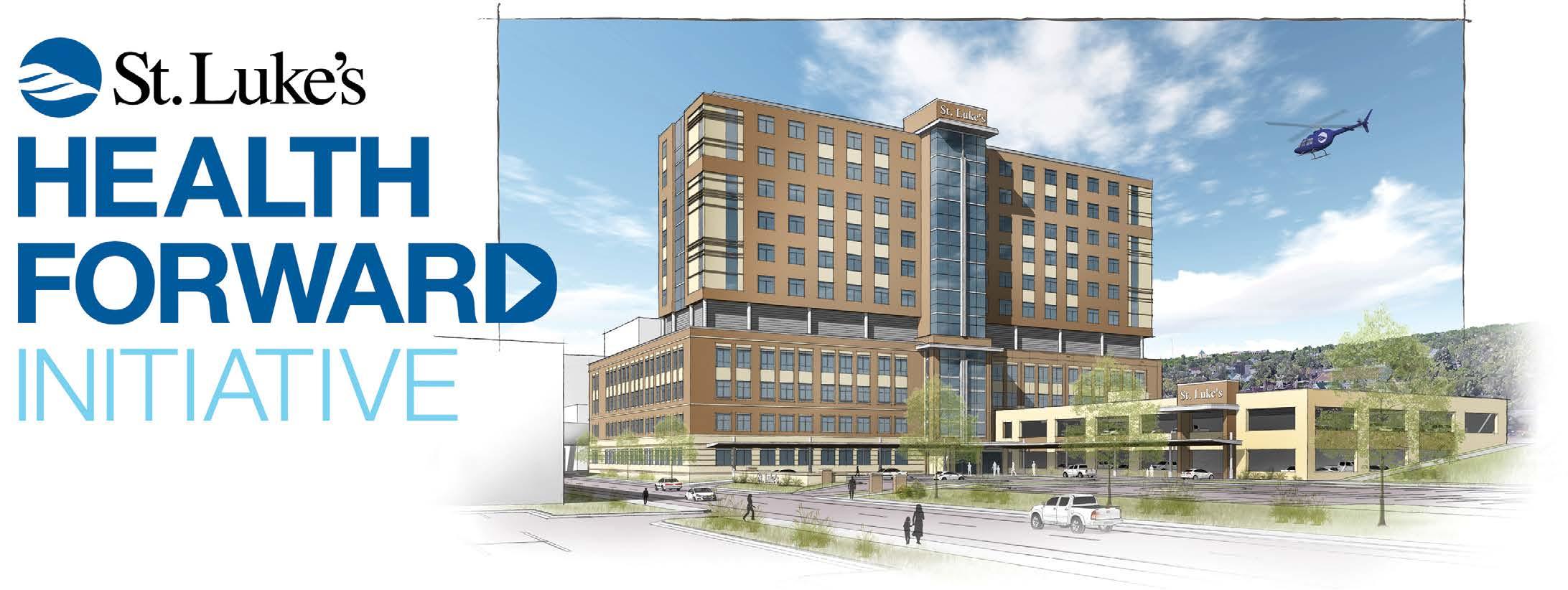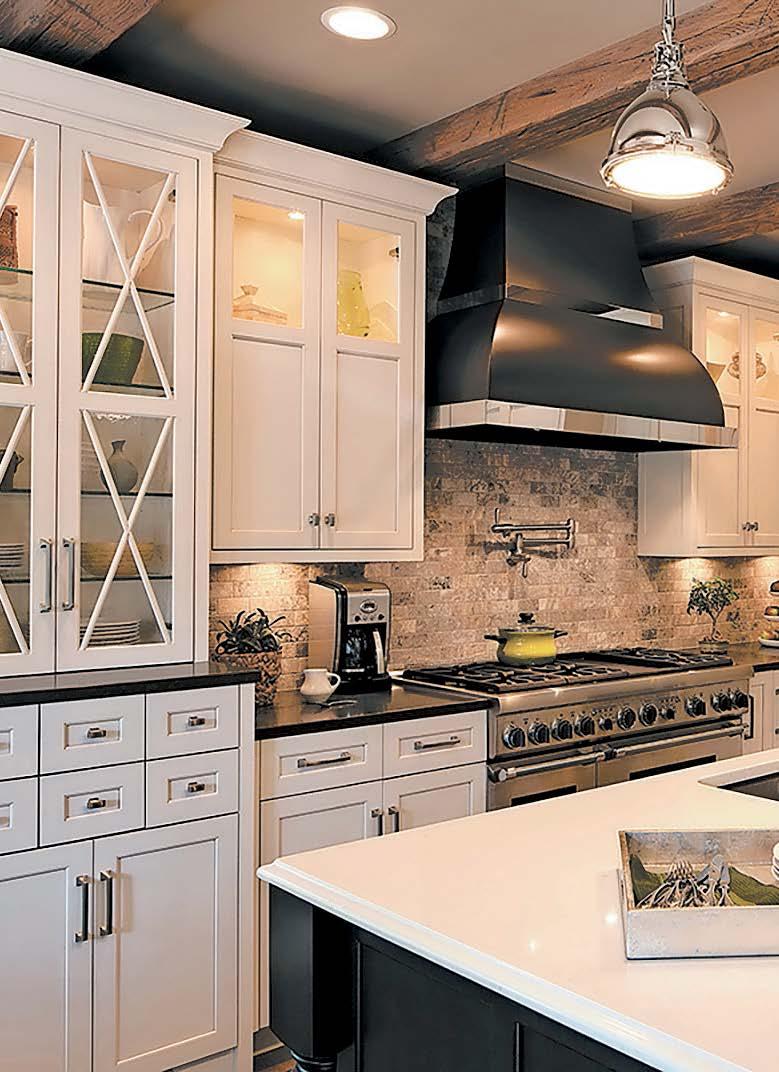
5 minute read
Advisory Banking for WomeninBusiness


community of sober folks, which evolved into Sober Duluth.
Now a registered LLC, Golding hopes to open Duluth’s first brick-and-mortar sober bar, serving mocktails, nonalcoholic beers and other spirit-free options.
Though the COVID-19 pandemic has those plans on hold, Golding is gearing up for more Sober Duluth events and pop-ups when it is safe to do so.



Golding emphasized that the sober community is diverse; there are a number of reasons people choose not to drink, drawing a wide range of people to her events.
“(Sober Duluth) provides a gap for people who don’t want to drink, whether it be just for the weekend, or they are in sobriety, or they take medication and they can’t drink alcohol,” she said.


In addition to hosting their own events, Sober Duluth also functions as a pop-up dry bar for people or businesses who want to create a more inclusive space.
In the coming months, Golding is going back to school to study cosmetology. Her partner, whom she met through the sober community on Instagram, is a barber, and the duo hope to go into business together in the near future.
To get connected with Sober Duluth and stay up to date with its events, visit facebook.com/soberduluth or follow @ soberduluth on Instagram. D
Sober Duluth Late Summer Sangria
Ingredients
• 6 blueberries
• A sprig of mint
• 2 peach slices

• Splash of switchel or apple cider vinegar

• White grape juice
• Sparkling water or seltzer
• Additional peach slice and mint leaf for garnish
Instructions
1. Muddle blueberries, mint and peach slides at the bottom of a tall glass. Sub in your favorite fruits if those aren’t your jam.
2. Splash with switchel or apple cider vinegar with “the mother” to give it “oomph.”
3. Fill the glass halfway with white grape juice and top off with sparkling water or seltzer.
4. Garnish with a peach slice and mint leaf.
5. Post to Instagram, tag @soberduluth and enjoy!
By Claire Kiger
Atthe height of the Victorian era, Duluth was a promising young city that was desperately lacking a hospital.
“We had lumberjacks and iron workers dying because they weren’t getting the care they needed,” Catherine Carter Huber, executive director of St. Luke’s Foundation, said.
The typhoid outbreak of 1881 finally made it impossible to continue ignoring the tremendous void.
A small group from St. Paul’s Episcopal Church took action. After only a month of preparation, they set up the humble beginnings of a hospital on the upper floor of an old blacksmith’s shop. They called it “St. Luke’s,” and within a month, they were so full that patients often had to share a bed. A few years later, the hospital relocated to a larger building, but that was soon outgrown as well.
Finally, in 1902, St. Luke’s moved for the last time to the corner of East First Street and Ninth Avenue, where it still stands today. For the past 117 years, the organization has continued to build onto this original facility in response to the region’s ever-changing needs. However, after numerous additions and updates, plans to build a brand-new St. Luke’s hospital have been set in motion.
When St. Luke’s Health Forward Initiative is finished in five to seven years, the size of Building A will double and a hospital tower will be added.

A multi-year, three-phase plan
“There came a point where it wasn’t enough to keep investing in our old facilities,” Mike Boeselager, vice president of St. Luke’s Support Services, said. “Medicine is evolving and it’s our responsibility to provide an environment that can keep up.”
Construction plans were created to refresh the entire campus and ultimately replace the building that had been passed down for generations. Appropriately named “St. Luke’s Health Forward Initiative,” the goal of this redevelopment project is to create an environment that nurtures the future of health care in the Northland.
“We offer such a high level of health care services,” Carter Huber said. “And we have to continue to grow so we can appropriately respond to the needs of our region.”
The Initiative has been broken into three phases. This approach allows St. Luke’s to respond to a shifting economic climate, advances in technology, and changes in the way care is delivered. As part of Phase I, construction on St. Luke’s Building A was completed in 2012, followed by a new surgery center in 2015. As operations were assessed to complete Phase I, St. Luke’s Emergency Department and Cardiac Catheterization Labs stood out.
Finishing Phase I
To create a vision for these new spaces, St. Luke’s included as many people as possible.
“We’ve spent hundreds of hours with a lot of different people working on these plans,” Boeselager said. “Basically, everyone at St. Luke’s has had a chance to provide feedback. We talked to people from housekeeping, lab, registration, diagnostic imaging and our physician group. We also involved our neighbors.”
The current ED offers 11 general treatment rooms, two trauma rooms and one behavioral health room. The new space located near 10th Avenue East and Second Street will be three times larger. This will allow for 27 general treatment rooms, four trauma rooms, four behavioral health rooms, two triage rooms and an additional area specifically for sexual assault victims.
Along with expanding ED square footage, this project will also streamline care. Two cath labs will be built in the new space along with a relocated helistop and ambulance garage.

“By having all of these acute services in one centralized location they’ll be connected like never before,” Boeselager said. “Door-to-treatment time will be cut drastically for our patients. When you are in a life-threatening situation and you need the best care as fast as possible, it will be available right here in Duluth at St. Luke’s.”
Phase I and III: the future of St. Luke’s and Duluth



Construction began on the new ED in April 2019 and will be completed in August 2020. The rest of the Initiative will take place over the next five to seven years. Phase II will involve expanding Building A to twice its current size and during Phase III a new hospital tower will be built in the same location. When the project is completed, St. Luke’s will have a facility that is fully equipped to serve Duluth well into the future.
“St. Luke’s was born out of our community’s need,” Carter Huber said, “and that focus has been key to our success. We will continue to respond to what our region needs.”
To learn more about St. Luke’s Health Forward Initiative, visit slhduluth.com/CampusExpansion. D
Claire Kiger is a marketing specialist and writer for St. Luke’s.

By John Gasele
We’ve all heard the phrase: “Get it in writing!” It’s an age-old admonishment, often tossed out jokingly in response to an offer made in jest. Any lawyer will tell you, however, that it is extremely important to get your agreements in writing. Putting everything down on paper is important for several reasons. The cynical among us will immediately jump to the conclusion a signed document gives you something to use as a sword or a shield in a dispute. It is very true that a written agreement is vital evidence in any dispute, but that’s not the primary idea to have in mind when coming to an agreement. Instead, people should think of how they can make a deal work and how unexpected events will be handled. A carefully written agreement can reduce the risk of conflict, make life more predictable, and perhaps resolve a conflict before it even begins.
Let’s use the example of starting a business. Perhaps two friends are starting a new company, or taking a fun hobby into the business world. It’s important that everyone involved has a conversation about their expectations and comes to a shared










